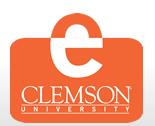 This program summary is based on the Webinar: I attended in early October.
This program summary is based on the Webinar: I attended in early October.
Overview of the Clemeson ePortfolio Program
The ePortfolio system at Clemeson University was implemented in 2006. It is a campus-wide program and currently (2010) it is mandatory for all undergraduate students to maintain an ePortfolio throughout their studies. Their ePortfolios are assessed twice per year (formative/summative) by trained peer assessors and faculty. Students select artifacts from their studies that reflect the eight competencies selected by the university. The competencies are reflective of student development across faculties. In order to explain how the selected artifacts meet these competencies students develop rationales which connect their evidence with the eight competencies.
1. Arts and Humanities
Demonstrate an understanding of the arts and humanities in historical and cultural contexts.
2. Critical Thinking
Demonstrate the ability to critically analyze the quality and utility of knowledge gained throughout the undergraduate experience and apply this knowledge to a wide range of problems.
3. Cross-Cultural Awareness
Demonstrate the ability to critically compare and contrast world cultures in historical and/or contemporary contexts.
4. Ethical Judgment
Demonstrate an ability to identify, comprehend, and deal with ethical problems and their ramifications in a systematic, thorough, and responsible way.
5. Mathematics
Demonstrate mathematical literacy solving problems, communicating concepts, reasoning mathematically, and applying mathematical or statistical methods, using multiple representations where applicable.
6. Natural Science
Demonstrate scientific literacy by explaining the process of scientific reasoning and applying scientific principles inside and outside of the laboratory or field setting.
7. Science, Technology and Society
Demonstrate an understanding of issues created by the complex interactions among science, technology, and society.
8. Social Sciences
Demonstrate an understanding of social science methodologies in order to explain the causes and consequences of human actions.
Support
The director of the project notes that there was very little support provided to learners in the first year of the project. Currently students are able to access online tutorials describing the process of developing their ePortfolio. They also offer weekly drop-in face-to-face sessions which students can attend. They note that their has been far more interest express in these sessions then the online component.
Tools
This project incorporated Google Apps for the development of student ePortfolios. Students develop their porfolios using Google Apps and then tag them in the CU Port management system. Faculty and adjudicators access this system in order to provide asssment.
Assessment
Each year there is a formative and summative assessment of students’ ePortfolios. For the formative review all artifacts are reviewed by faculty and/or peers. These peers are trained to offer formative assessment. At the end of the school year students’ artifacts are assessed and scored by a group of faculty. This group spends a week assessing the ePortfolios and scores them based on the extent that the artifacts meet the eight competencies. Formative feedback goes back to the students and is used to make adjustments and changes to the program throughout the year. The summative data is written up in an annual approach that is shared with areas of the University administration such as the curriculum committee. Summative data is also sent to individual faculties and units at their request.
Examples
Gallery of examples
Contact/Resources
ePortfolio Program Director: Gail ring
Website: http://clemson.edu.ugs/eportfolio